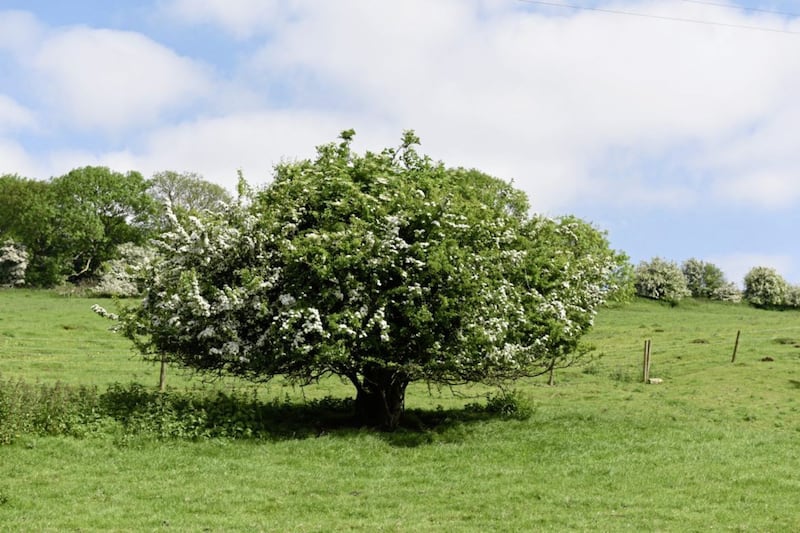IN RECENT weeks we have shared a collective desire to say goodbye to a cold hard winter, whose biting eastern winds stubbornly hung on until early April. Spring’s arrival was confirmed for me by a chiffchaff calling from trees on my local brae on April 5 – the bird I wrote of some weeks ago, which has journeyed from Africa to feed from our insect rich skies and breed among low growing shrubs and grasses.
It, along with many other migrant and resident birds, have already begun to pair and nest. Their hatched young will arrive to coincide with available food, much of which will come from the boughs and leaves of our trees and hedgerows.
One of the most highly respected of those is our native hawthorn, Crataegus monogyna, grown as a small bushy tree or more commonly as a hedge to mark field boundaries and roadsides.
Crataegus, from the Greek kratos, "strength" and akis, "sharp", refers to its thorny structure, a feature which makes it such a popular stock-proof hedge with the farming community.
One of the ‘fairy-tree triad’ of Ireland, ‘oak, ash and thorn’, it was revered in ancient Brehon Law, known as the ‘commoner of the wood’. Such sacred trees and groves were considered as sanctuaries and often used as locations for celebrations. Hence any wanton cutting or destruction of them was a serious crime.
An early legal poem, Crith Gablach (700AD), translated by DA Binchy, reads, “A danger from which there is no escape is the penalty for felling a sacred tree”.
These words of reproach are mirrored by those of Kevan Hughes, a young poet and musician, sadly no longer with us, from my hometown of Dromore, where in his poem, The fairy thorn, he writes:
O but take heed child of Adam/My roots go very deep
And deeper still my scorn/If you harm me leaf or bough
Strange secrets still I keep/For I am a fairy thorn’’
(from Where I Walk; K Hughes, 2014)
In May and June, some weeks after the first leaves fully unfurl, hawthorn branches will be heavily laden with an overwhelming milky white profusion of blossoms. Known in Irish, as Sceach Gheal, from sceach meaning ‘thorn bush/briar’ and geal meaning ‘bright/luminous/’, the hawthorn is thought to support more than one 150 species of insect (RSPB).
A food plant for the caterpillars of many moths, its flowers also provide nectar and pollen for bees and flies to enable pollination. The dense thorny foliage provides excellent nesting shelter for many species of birds and later its haws are eaten by redwings and thrushes, as well as small mammals.
The hawthorn, with its many other english names of, whitethorn, quickthorn and May, has a vast repository of lore going back to ancient times when our ancestors made much use of it for food, its young leaves used in salads while jellies and wines were produced from its berries.
Garlands were made from its blossoms and used to decorate maypoles outside houses at the ‘Beltane’ or May Day spring celebrations. Using such blossoms and twigs outside was allowed but bringing hawthorn into the house was strictly forbidden as it could be followed by illness or death. To this day the lone hawthorn standing in a field is treated with much respect and some suspicion by rural communities.
For the next few months, however, we can enjoy this, "gentle thorn’’ as Kevan describes it, whose "roots are ancient’’, and appreciate its value to a new generation of wildlife as well as for its giving ‘"shelter to the cattle and shelter to the sheep".







